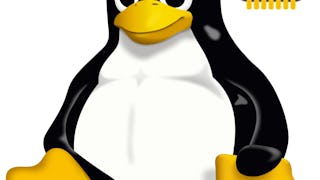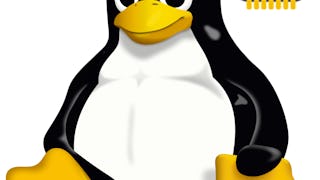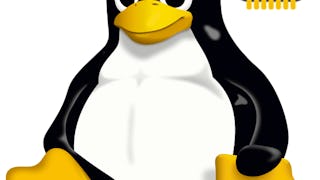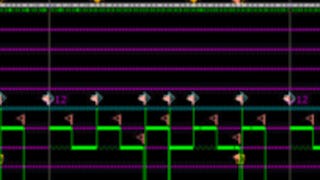This course provides an introduction to Kernel Driver development for the Linux operating system. The Yocto build system is introduced, which students use to build their own custom Embedded Linux system through programming assignments.


Linux Kernel Programming and Introduction to Yocto Project
This course is part of Advanced Embedded Linux Development Specialization

Instructor: Daniel Walkes
9,659 already enrolled
Included with
(26 reviews)
Recommended experience
What you'll learn
Fundamentals of Linux kernel development.
How to build a custom Linux kernel driver and deploy on an Embedded Device.
How to use the Yocto project to build Embedded Device images
Skills you'll gain
Details to know

Add to your LinkedIn profile
6 assignments
See how employees at top companies are mastering in-demand skills

Build your subject-matter expertise
- Learn new concepts from industry experts
- Gain a foundational understanding of a subject or tool
- Develop job-relevant skills with hands-on projects
- Earn a shareable career certificate

There are 4 modules in this course
In this module, you will learn the basics of Linux Device Drivers, including how to build and run a Linux Device Driver. You will modify the socket application you developed in the previous course and add threading. You will also be introduced to the Yocto Project and build a custom Yocto image which includes your custom socket application developed in the previous course.
What's included
11 videos4 readings2 assignments1 peer review
In this module, you will learn about the different types of Linux Kernel drivers and the kernel support for character device drivers. You will learn about fundamental driver data structures and functions for interacting with user space. You will understand the basics of Kernel debugging and how this differs from application debugging. You will implement a unit-tested circular buffer which will be used in future assignments. Finally, you will build a Yocto embedded device image with support for an out of tree kernel module.
What's included
7 videos2 readings2 assignments1 peer review
In this module, you will learn the basics of concurrency in the Linux kernel, and how to use semaphore and mutex in your device driver to design for concurrent access. You will learn the difference between atomic and non atomic context and strategies for locking in each context. You will modify your socket application to interact with a custom character device based on your tested circular buffer implementation using the concurrency concepts discussed in the module.
What's included
8 videos1 reading1 assignment1 peer review
In this module, you will learn the purpose and use of the ioctl command for Linux drivers and how the ioctl command is implemented in a driver. You will learn the basics of sleeping and waking up in the Linux kernel and how to handle blocking and non-blocking IO. You will modify your custom Linux kernel driver and Linux application to include ioctl support.
What's included
6 videos1 reading1 assignment1 peer review
Earn a career certificate
Add this credential to your LinkedIn profile, resume, or CV. Share it on social media and in your performance review.
Build toward a degree
This course is part of the following degree program(s) offered by University of Colorado Boulder. If you are admitted and enroll, your completed coursework may count toward your degree learning and your progress can transfer with you.¹
Instructor

Offered by
Explore more from Software Development
 Status: Free Trial
Status: Free TrialUniversity of Colorado Boulder
 Status: Free Trial
Status: Free TrialUniversity of Colorado Boulder
 Status: Free Trial
Status: Free TrialUniversity of Colorado Boulder
 Status: Free Trial
Status: Free TrialUniversity of Colorado Boulder
Why people choose Coursera for their career




Learner reviews
26 reviews
- 5 stars
80.76%
- 4 stars
15.38%
- 3 stars
0%
- 2 stars
3.84%
- 1 star
0%
Showing 3 of 26
Reviewed on Apr 11, 2023
The course is not easy, but it worth invested time. IMO, the main advantage is the experience gained.

Open new doors with Coursera Plus
Unlimited access to 10,000+ world-class courses, hands-on projects, and job-ready certificate programs - all included in your subscription
Advance your career with an online degree
Earn a degree from world-class universities - 100% online
Join over 3,400 global companies that choose Coursera for Business
Upskill your employees to excel in the digital economy
Frequently asked questions
To access the course materials, assignments and to earn a Certificate, you will need to purchase the Certificate experience when you enroll in a course. You can try a Free Trial instead, or apply for Financial Aid. The course may offer 'Full Course, No Certificate' instead. This option lets you see all course materials, submit required assessments, and get a final grade. This also means that you will not be able to purchase a Certificate experience.
When you enroll in the course, you get access to all of the courses in the Specialization, and you earn a certificate when you complete the work. Your electronic Certificate will be added to your Accomplishments page - from there, you can print your Certificate or add it to your LinkedIn profile.
Yes. In select learning programs, you can apply for financial aid or a scholarship if you can’t afford the enrollment fee. If fin aid or scholarship is available for your learning program selection, you’ll find a link to apply on the description page.
More questions
Financial aid available,

